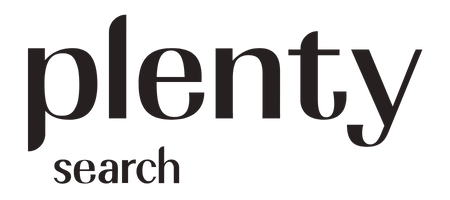5 Unconventional Ways to Enhance your Diversity Executive Search
If the last few years have taught us anything, we must re-examine any forgone conclusions we have about the workforce. The global pandemic, focus on racial inequity, and major shifts in the tech hiring landscape have resulted in a tremendous amount of change and greater emphasis on inclusive hiring. We now have amassed overwhelming empirical evidence proving the business case for diversity. Organizations with greater diversity have been proven to have 19% higher innovation revenue, 9% higher EBIT margins and 2.3x higher cash flow per employee (HBR, Deloitte)
We are now collectively writing a new playbook for work. One of the most critical chapters will address how organizations can sustainably ensure diversity and inclusion--starting with recruiting. To drive change, we must break the mold of how we approach diversity executive search.
Unconventional times call for unconventional measures. The truth is that the systems in place led us to the lack of representation in the workforce we see today. We need to reimagine our hiring strategies.
A few years back, our partner at Plenty Search, Arthur Woods, collaborated with his team at Mathison to study the equitable hiring strategies of hundreds of employers and featured findings in his book, Hiring for Diversity. Their 2021 Diversity Hiring Study revealed that 62% of underrepresented job seekers observe bias in the hiring process. Twelve job-seekers communities from the LGBTQ+ community and communities of color to people with disabilities and neurodivergent job seekers - are all underrepresented in the workforce.
Here are five unconventional strategies for mobilizing your diversity executive search. Each of these strategies is not only possible for any organization, but they also require no monetary investment.
1. Clarify what you mean by diversity - and be inclusive.
Research repeatedly showed leaders’ vastly different definitions of diversity. Many only acknowledged physical, visible aspects of diversity, which left entire communities out. We recommend shifting your emphasis to underrepresented job-seeking communities and building awareness of each group across your organization. These groups include people you may not think of such as older and experienced workers, refugees, and immigrants. You may also include the LGBTQIA+ community, people with disabilities, veterans, and formerly incarcerated individuals. Don't forget to solicit the Black, Hispanic, Latinx, Indigenous, and Native American communities. In addition, women, the Asian American and Pacific Islander communities, and working parents also merit inclusion.
2. Empower your people to think about their awareness and reach out to different underrepresented communities.
Your organization's awareness of and advocacy for different communities depends on each team member. Explore a more holistic definition of diversity as an organization. Then, prompt each team member to reflect on their awareness and have them reach out to each community to solicit for a job or address their own personal bias. Harvard’s implicit bias test helps your team test their assumptions and heuristics.
3. Institute an alignment meeting for every new role.
Much of the bias and inequity in hiring rests on existing job requirements and processes that everyone agrees to upfront. To ensure everyone concurs about the most accessible requirements, host a 15-minute alignment meeting with all hiring stakeholders. In this meeting, ensure that the job role is aligned with the most essential requirements. Also, secure the agreement of everyone as to the hiring process, and the role each will play. Doing so helps drive accessibility and consistency in the process, and enables to get buy-in from everyone involved.
4. Send interview questions to job seekers in advance.
This idea might come as a surprise! But the purpose of interviews isn't to catch job seekers off guard or to test their improvisation abilities. It is to see if they have the skills and experience needed to be successful on the job. Sending questions ahead lets job seekers come prepared, present their best selves, and feel empowered by and confident in the process. From an accessibility standpoint, neurodivergent job seekers or job seekers with disabilities may require additional time and context around the prompts.
5. Shift your approach to inclusive work assignments
Work assignments are great for understanding what a candidate can deliver but they can be inaccessible if not approached thoughtfully. We recommend communicating work assignments early in the hiring process and providing a generous window of 7-10 days to complete the assignment. It’s best to keep work assignment scope to minimal time investment and if the time investment is larger, consider providing equitable compensation for time required in the assignments. For candidates that have barriers, consider previous work samples from the candidate to avoid requiring them to create new work.
6. Ask job seekers for their feedback on how to make the process more inclusive.
It doesn’t matter whether you extend an offer to a candidate or not, or if they accept or decline. This is the time to ask for feedback— to see where you can make your process more accessible and inclusive. 67 percent of applicants reported completing an interview and never receiving feedback. This is a simple step that most employers never think to take. It is the best time to learn from job seekers what is missing-- in the job description, hiring process, and more. Not to mention, the nature of asking this question signals that you are listening.
These are just a fraction of the creative and unconventional ideas that make the hiring process more equitable and inclusive. The new playbook for inclusive hiring, requires us to stray from the norm and lead with empathy. There's much more to explore, and we're excited to witness the growth of this new, human-centered approach to talent acquisition. At Plenty Search, we're dedicated to pushing boundaries and fostering diverse, equitable, and inclusive workplaces—one executive search at a time.
